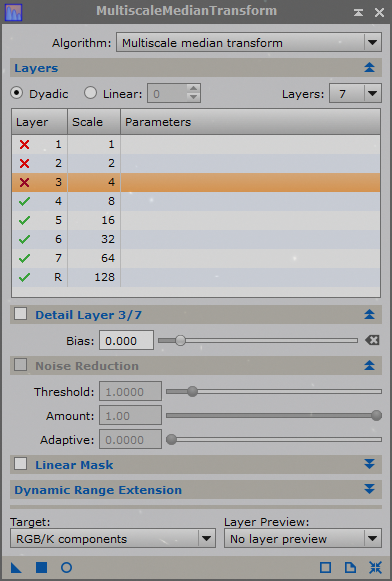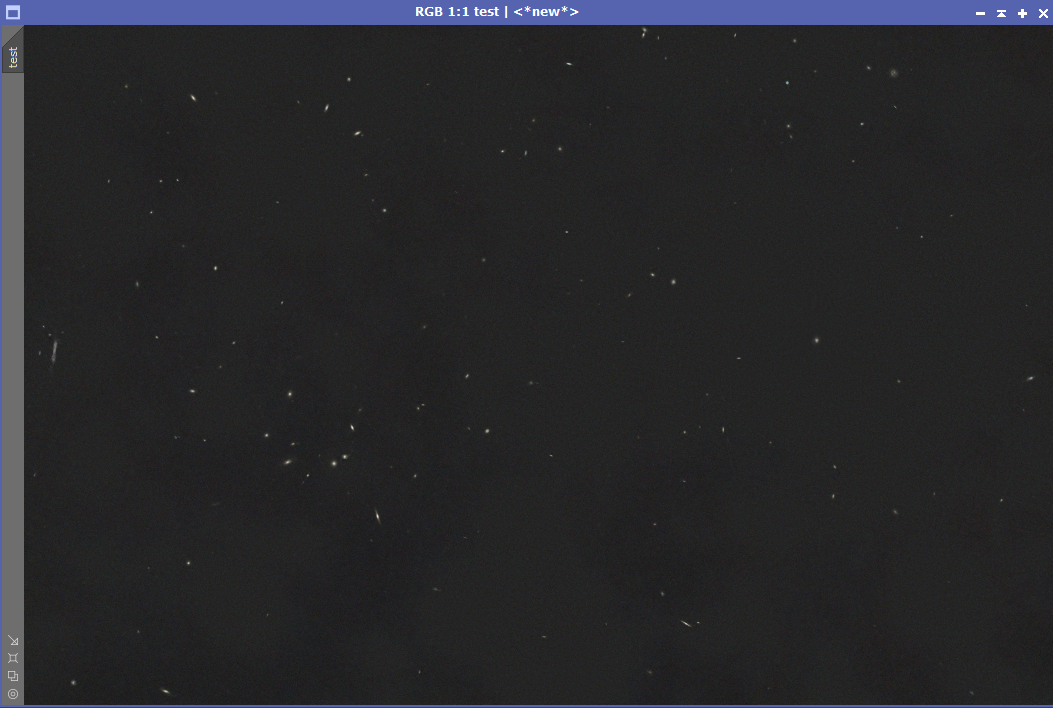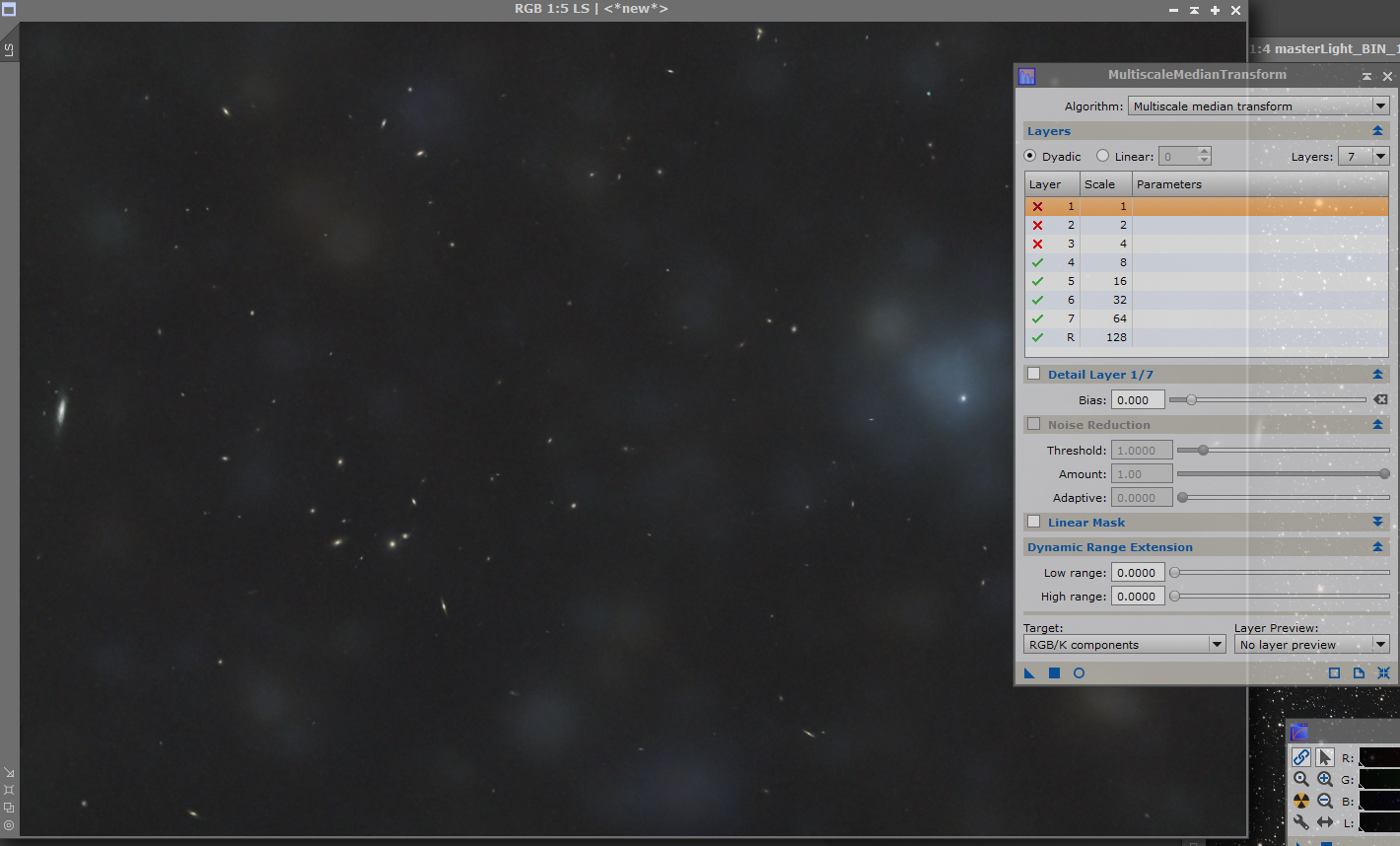Last night I shot M34 as I fancied trying to capture some of the faint tiny galaxies nearby too.
I've processed the frames and it resulted in this
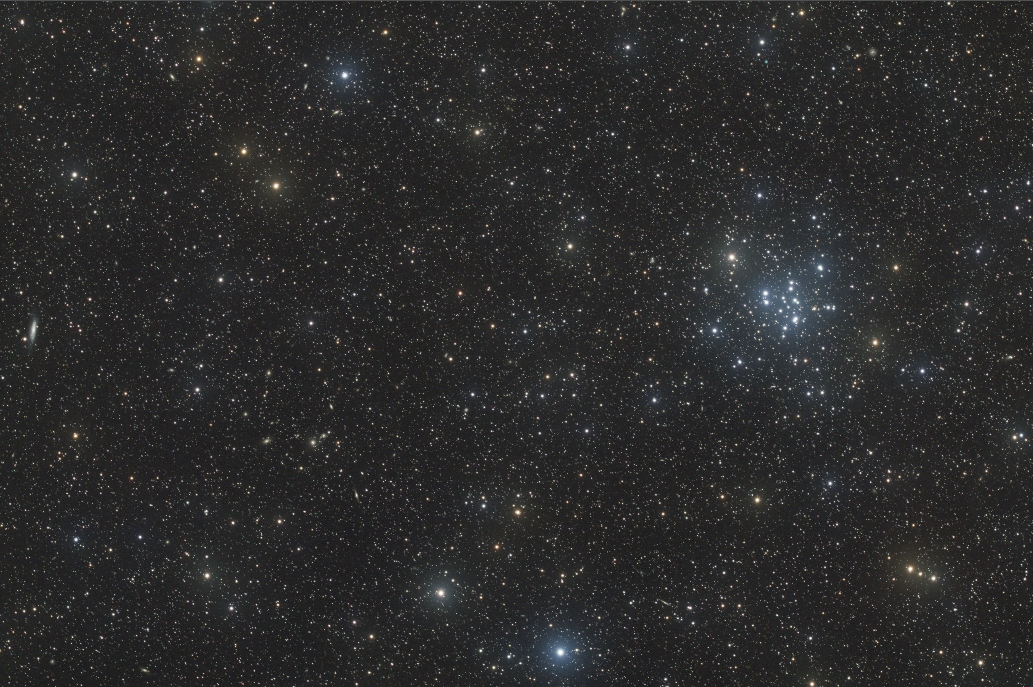
I rather like it, but I've been wondering if I'd like it more without the misty glow around the stars. It's already been through a round of Blurxterminator, so I thought about trying Starxterminator. That produced this as its "starless" image.
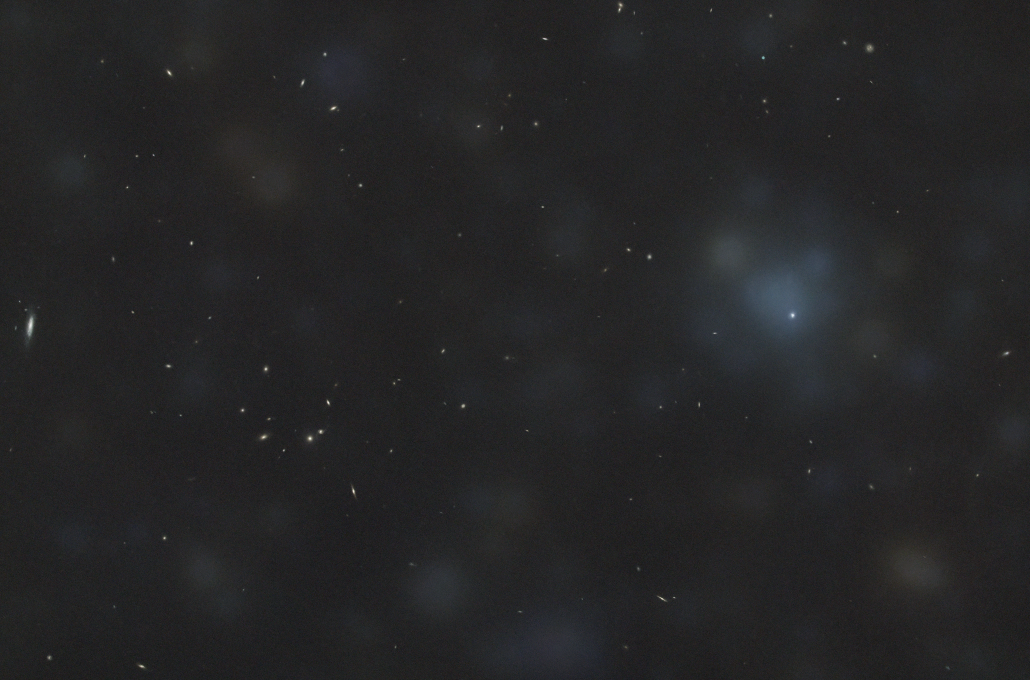
It's picked out the galaxies impressively well, but I can't think how to reduce the mottled misty bits .
Does anyone have any ideas how I could use Pixinsight to reduce this. Should I even bother?
As I say, I rather like the first image and the glow seems to be a result of the stars' brightness, so I'm relaxed about it. This is just because I'd like to see the difference if possible!
I've processed the frames and it resulted in this

I rather like it, but I've been wondering if I'd like it more without the misty glow around the stars. It's already been through a round of Blurxterminator, so I thought about trying Starxterminator. That produced this as its "starless" image.

It's picked out the galaxies impressively well, but I can't think how to reduce the mottled misty bits .
Does anyone have any ideas how I could use Pixinsight to reduce this. Should I even bother?
As I say, I rather like the first image and the glow seems to be a result of the stars' brightness, so I'm relaxed about it. This is just because I'd like to see the difference if possible!
